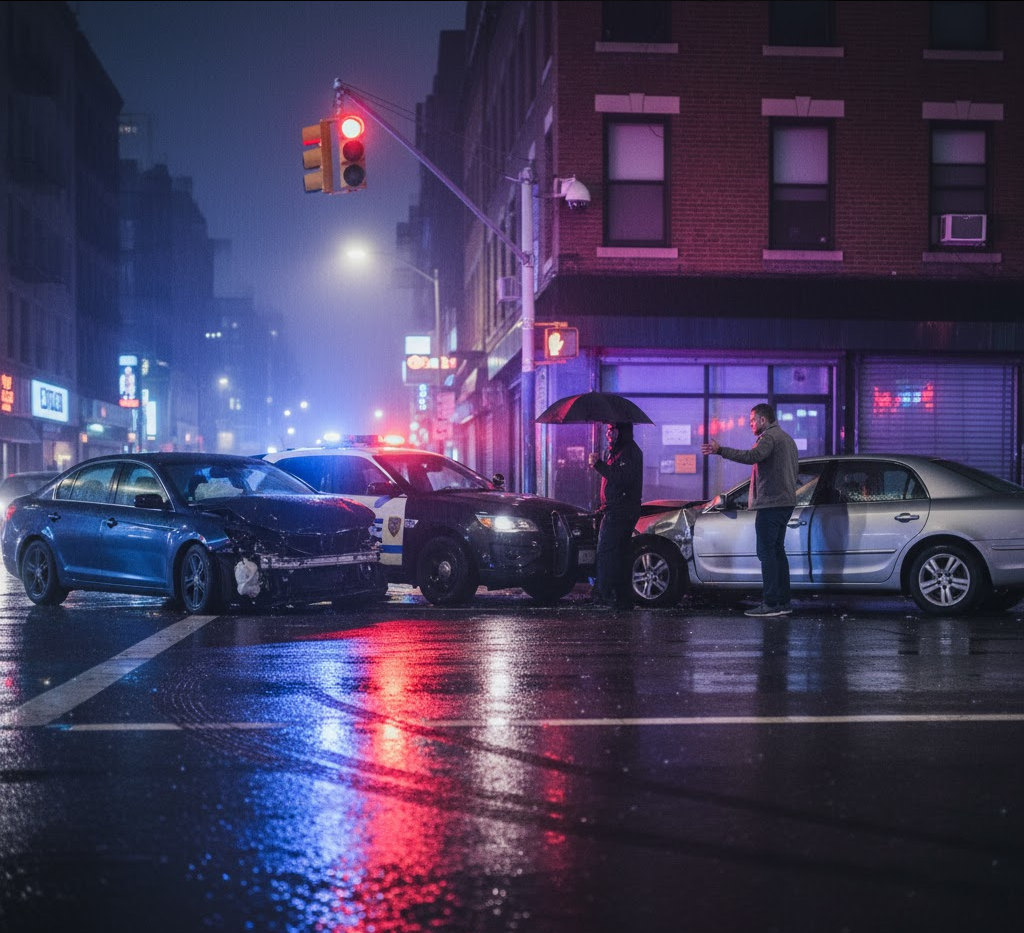What Happens If the Other Driver Lies About a Crash?
After a collision, it’s not unusual for stories to conflict. Stress, fear, and insurance pressure can lead some drivers to make statements that are incomplete or deliberately false. If the other driver lies about a crash, your case isn’t doomed. Facts still matter. Evidence still speaks. This FAQ explains how false statements affect fault, insurance negotiations, and lawsuits in Texas and New Mexico and what you can do right now to protect your claim.
Can a lie really change who’s found at fault?
It can influence the early narrative, especially in the first 48–72 hours when insurers open a claim and a police report is being drafted. But fault isn’t decided by whoever talks first; it’s decided by evidence. Photographs, vehicle damage, event data recorders (EDRs), dashcams, 911 recordings, physical marks on the roadway, and neutral witnesses often outweigh a self-serving account.
What evidence helps disprove a false story?
Objective, time-stamped, and independent evidence has the most weight. Examples include:
- Scene photos and video: Vehicle positions, skid marks, resting angles, debris fields, and traffic control devices.
- Dashcam or nearby cameras: Many intersections and businesses capture useful angles. Ask nearby stores promptly.
- EDR (“black box”) data: Speed, brake application, throttle, and seatbelt status seconds before impact.
- 911 audio and CAD logs: Call timing and statements made before anyone can coordinate a story.
- Airbag control module data: Often corroborates occupant movement and impact severity.
- Medical records: Injury mechanics can contradict claimed crash dynamics.
- Neutral eyewitnesses: Independent accounts — especially from drivers not involved — carry strong credibility.
For basic safety and post-crash steps, see the National Highway Traffic Safety Administration’s guidance on what to do after a crash.
What should I do at the scene if I suspect the other driver is lying?
- Call 911 and request police and medical evaluation. A formal report anchors the timeline.
- Record the scene: Take wide shots, close-ups, traffic signals, weather, and any obstructions. Photograph license plates and VIN stickers if safe.
- Collect witness info: Names, phone numbers, and short voice memos (with permission). Don’t rely on police to capture everyone.
- Preserve your statements: Give simple, factual details. Avoid speculation. If you’re hurt, say so.
- Look for cameras: Note doorbell cams, storefront domes, and transit buses. Ask owners to preserve video.
- Seek medical care the same day. Delays can be spun as proof you weren’t hurt.
How do police reports handle conflicting stories?
Officers document statements, physical evidence, and (when available) citations. A report may assign contributing factors or list an “investigation pending.” If the other driver lies, the officer may still cite them based on roadway evidence and interviews. If the report contains errors, you can submit a supplemental statement or request an amendment. In serious crashes and commercial vehicle collisions, specialized reconstruction may occur. Learn more about why official reports matter from NHTSA and, for commercial crashes, the FMCSA.
Will the insurance company just believe their insured?
No — not if the facts say otherwise. Adjusters weigh liability by comparing statements to physical proof. Inconsistencies, implausible timelines, and data downloads can quickly undercut a false narrative. If the insurer still denies or lowballs despite strong evidence, your attorney can escalate with a spoliation letter, formal evidence requests, and, if needed, a lawsuit.
What is a spoliation letter and why is it important when someone lies?
A spoliation letter formally notifies the at-fault driver, their insurer, and any third parties (like a business with a camera) to preserve relevant evidence like dashcam footage, EDR data, cell phone logs, vehicle inspection records, and surveillance video. Destroying evidence after receiving notice can lead to legal consequences and jury instructions that favor you.
How do cell phone records play into a disputed crash?
If distraction is suspected, call and text logs, app usage, and phone location data can be critical. These are typically obtained through consent, subpoena, or discovery after a lawsuit is filed. When a driver denies using their phone, objective records may tell a different story. NHTSA’s data on distraction-related crashes underscores why distracted driving is central to many investigations.
What if the other driver changes their story later?
Shifting statements damage credibility. Prior recorded statements, 911 calls, and body cam footage can be used to impeach inconsistent testimony. In litigation, depositions lock in sworn accounts. Juries notice when a story keeps moving.
Does comparative negligence in Texas or New Mexico affect this?
Yes. Both states use comparative fault systems. In Texas, you generally can’t recover if you’re more than 50% at fault. New Mexico allows recovery reduced by your percentage of fault. When someone lies, they may be trying to push you over a threshold or inflate your share. Solid evidence protects your ability to recover under these rules.
How can expert reconstruction help?
Accident reconstructionist use physics, scene measurements, vehicle crush profiles, EDR data, and time–distance analysis to build a model of what happened. A professional reconstruction can neutralize false claims about speed, distance, signal phase, or line-of-sight. In commercial cases, trucking experts may also analyze hours-of-service, maintenance, and driver qualification files. See federal carrier safety requirements at the FMCSA Hours-of-Service overview.
What if the lie is about injuries rather than fault?
Insurers may argue that your pain is “preexisting” or “minor.” Thorough medical documentation, diagnostic imaging, and consistent symptom reporting are key. Keep a simple recovery journal. Objective records, not someone’s opinion, carry the day.
Can social media posts hurt or help my case?
Absolutely. The other driver’s public posts may contradict their statements (e.g., admitting fault or showing risky behavior). Conversely, your posts can be twisted out of context. Lock down your privacy settings and avoid discussing the crash online.
How do commercial vehicle (18-wheeler) cases differ when a driver lies?
There’s usually more evidence and more to preserve. Trucking cases can involve dashcams (road- and driver-facing), telematics, electronic logging devices, and fleet maintenance records. Federal rules require motor carriers to keep certain documents, but retention periods can be short. Immediate preservation is critical. Explore the federal safety framework at the FMCSA Safety portal.
What if the police report seems wrong?
Reports can contain mistakes. You can request an officer interview, submit supplemental information, and provide objective materials (video, measured diagrams, medical records). Don’t argue at the scene. Build, then present, a complete evidence package. For state-level crash records and safety data, see TxDOT Traffic Safety (Texas) and New Mexico DOT.
When should I talk to a lawyer?
When the other driver lies – immediately. Early legal action preserves video, secures downloads, and keeps the narrative honest. An attorney coordinates experts, communicates with adjusters, and positions your case for the best outcome, whether through negotiation or trial.
Bottom line
False statements can complicate a car crash claim, but they don’t decide it. Evidence does. Move quickly, be factual, and get help. The right strategy turns a disputed story into a provable case.
Free Case Review — Tell Us What Happened
If the other driver is lying about your Texas or New Mexico crash, get a fast, evidence-focused plan. Call 806-242-3333 to contact Attorney Dean Boyd for a free consultation. No fee unless we win.


